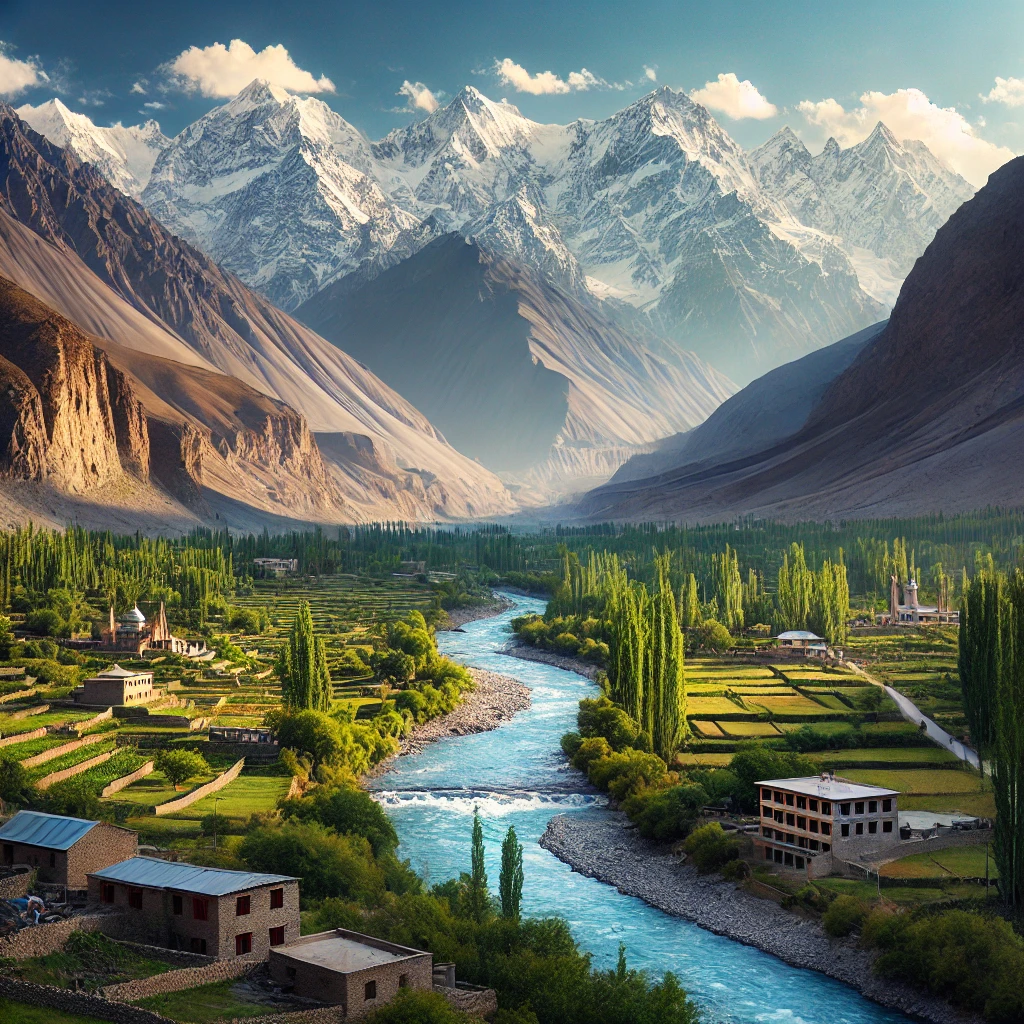Pakistan on World Tourism Day: Preserving Tourist Spots and Exploring Popular Destinations
Pakistan on World Tourism Day emphasizes preserving its natural and cultural heritage while promoting popular destinations. From historic sites to scenic landscapes, the focus is on sustainable tourism, boosting local economies, and offering travelers unforgettable experiences in 2025.
World Tourism Day, celebrated annually on September 27. The day serves as a reminder of the social, cultural, and economic value of tourism. Pakistan, with its rich history, vibrant culture, and diverse landscapes, has become a significant destination for both local and international travelers. On this day, it’s essential not only to celebrate tourism but also to consider how we can protect and sustain the country’s remarkable tourist spots for future generations.
Popular Tourist Sites in Pakistan:
Pakistan is land of thousands of tourist and historical sites. some of them are here.
- Hunza Valley:
Located in Gilgit-Baltistan, Hunza is known for its stunning landscapes, with towering mountains, lush greenery, and peaceful rivers. The valley attracts both adventure seekers and those in search of tranquility. Karimabad, Passu Cones, and Rakaposhi are must-visit spots in the valley. - Fairy Meadows:
Known as the gateway to Nanga Parbat, the world’s ninth-highest mountain, Fairy Meadows is a dream for trekkers and nature lovers. This site provides breathtaking views of snow-covered peaks and endless meadows, making it one of the most beautiful tourist spots in Pakistan. - Mohenjo-Daro:
A UNESCO World Heritage site, Mohenjo-Daro is an ancient city that dates back to the Indus Valley Civilization (around 2500 BCE). It’s one of the earliest urban settlements in history and offers a unique glimpse into Pakistan’s ancient heritage. - Badshahi Mosque and Lahore Fort:
Lahore is rich in cultural history, and its iconic sites like the Badshahi Mosque and Lahore Fort draw thousands of tourists every year. These Mughal-era structures are not only architectural marvels but also carry significant historical value. - K2 and Concordia:
For mountaineers, K2 is a name that requires no introduction. Standing as the second-highest peak in the world, K2 attracts climbers from all around the globe. Concordia, the confluence of Baltoro and Godwin-Austen glaciers, offers a unique viewpoint for some of the highest mountains in the world. - Skardu:
Skardu serves as the gateway to some of the world’s highest peaks, including K2. Its serene lakes such as Shangrila and Satpara are perfect for relaxation. The region is also home to ancient forts like Skardu Fort and Shigar Fort, reflecting the area’s historical importance. - Swat Valley:
Known as the “Switzerland of Pakistan,” Swat Valley is renowned for its lush landscapes, rivers, and ancient Buddhist heritage. The valley offers cultural tours, trekking, and scenic beauty, making it a favorite among tourists. - Gwadar:
Gwadar, situated on the southwestern coast, is gaining recognition for its pristine beaches and strategic location. The region offers a unique combination of desert landscapes meeting the Arabian Sea, attracting tourists looking for tranquility by the beach.
Taking Care of Pakistan’s Tourist Spots:
Now have these beautiful and historical sites, Pakistan and its people who are custodians of these sites, are responsible to protect and respect these places.
here are few thinks what they should do to :
Respect the Environment:
Tourists or locals must be mindful of preserving the natural beauty of Pakistan’s tourist spots. Whether it’s the snow-capped peaks of the north or the coastal regions in the south, littering, pollution, and disturbance to wildlife should be avoided. Initiatives like responsible camping and eco-friendly tourism practices should be promoted.
Community Engagement:
Another things is supporting local communities is vital for sustainable tourism. Tourists can engage with local artisans, stay at locally owned guesthouses, and support businesses that promote eco-tourism. This not only helps protect the culture but also ensures the well-being of the people living in these regions.
Conservation Efforts:
Government bodies and tourists alike must work towards conservation efforts to protect the flora and fauna, historical sites, and fragile ecosystems in Pakistan. For example, maintaining cleanliness in the mountainous areas of Gilgit-Baltistan and ensuring the preservation of heritage sites like Mohenjo-Daro is crucial.
Awareness Campaigns:
Awareness is key to the long-term preservation of tourist sites. Educational campaigns about the cultural significance and environmental sensitivity of various locations can encourage responsible tourism. Authorities can organize workshops or informational sessions for tourists, highlighting the do’s and don’ts in these regions.
In the end Pakistan has an abundance of amazing and memorizing tourist destinations that reflect its rich cultural heritage, natural beauty, and historical significance.
On this World Tourism Day, while Pakistanies celebrate the growing tourism potential of the country, let us also promise to preserve and protect these treasures for generations to come.


Comments are closed, but trackbacks and pingbacks are open.